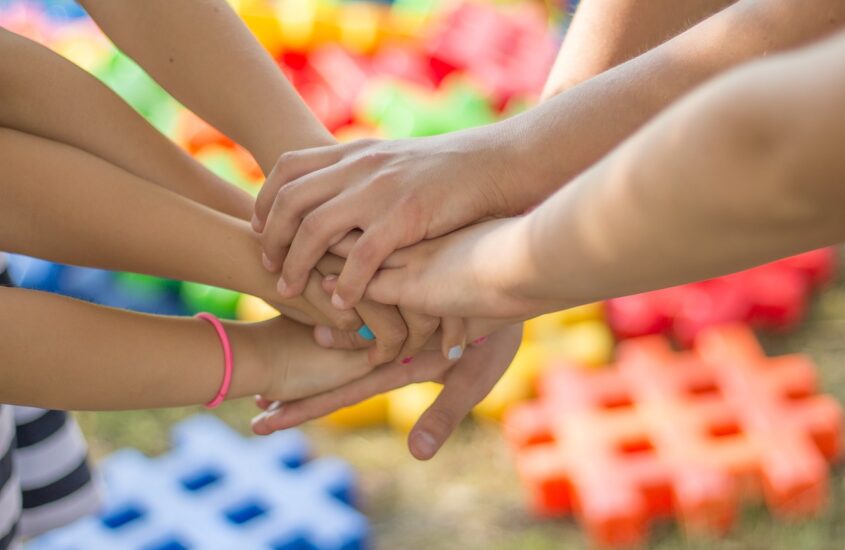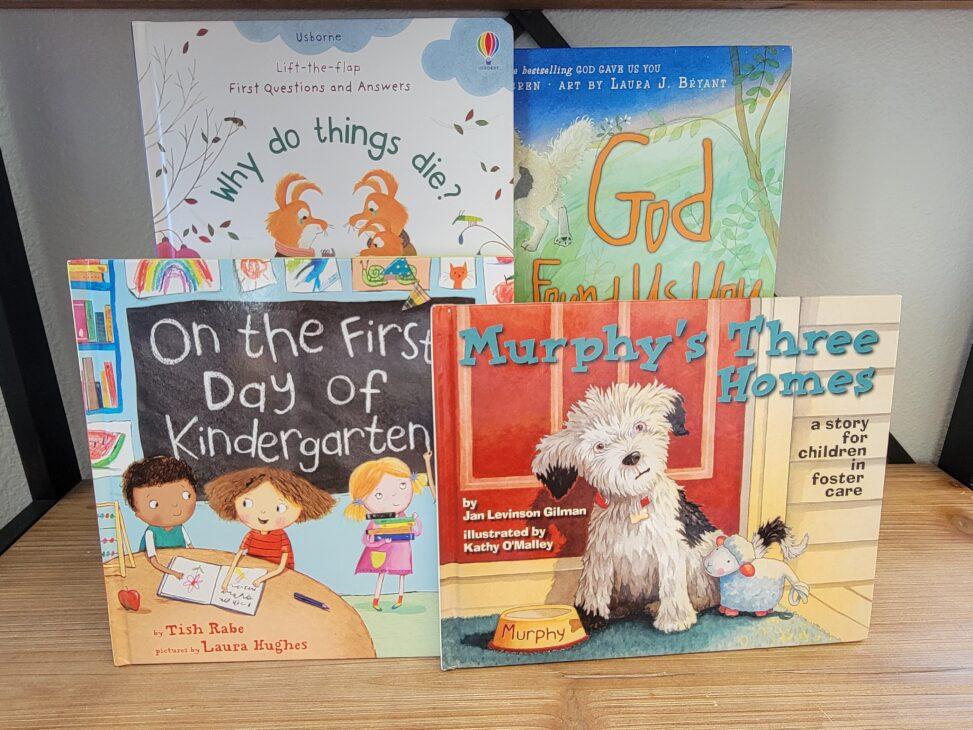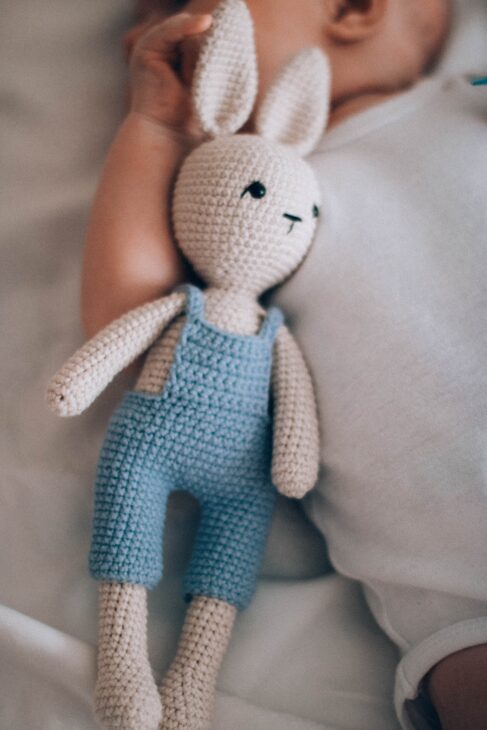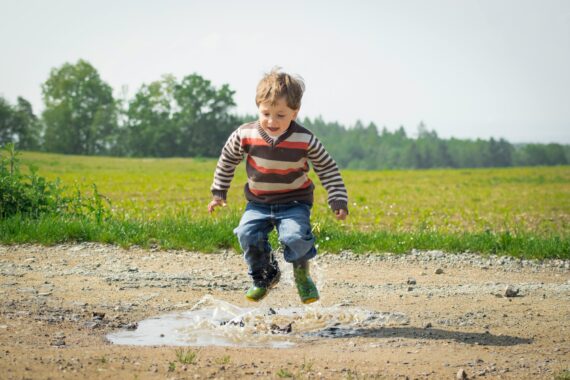15 Ways to Help Your Kids Navigate Transitions

Life is a series of transitions, and helping our little ones navigate these changes with grace and confidence is a beautiful gift we can offer. In 2019, we took placement of 2 foster children. A brother and a sister who were most likely in need of a forever home. They had moved around a lot in the previous 18 months. There has been a lot of trauma and emotional blocks we have had to help our kids work through. Transitions have always been a very difficult time for them, especially given their history. We had to really educate ourselves on how to minimize the impact of transitions, because life is full of them. Whether it’s starting school, moving to a new home, or welcoming a new sibling, here’s your guide to supporting your kids during times of transition:
*This post contains links to products. I may receive a small commission if you purchase through one of these links. This is one of the ways I support my family. Thank you!
1. Open Communication
Talk to your child about the upcoming change in a clear and age-appropriate manner. Address any questions they might have and reassure them that their feelings are valid. When we moved at the end of 2020, my kids were very concerned. This showed in their behavior. Rather than stay frustrated at the change in demeanor, we were able to see if for what it was. A trauma response to the many other times their living situation changed without warning. We talked through what each phase of the process would look like. We invited them to dream with us about their new space and what they wanted in it. While the emotional response still happened, we laid a foundation of talking things through.
2. Create a Safe Space
Let your child know that their feelings are welcome. Encourage them to express their emotions – whether excitement, nervousness, or even apprehension. As adults, we often have bad days. Our moods don’t stay perfectly level throughout the day. Kids are the same way, but oftentimes their emotional swings are much more noticeable and not as well-managed. It is our job to meet our kids where they are at and guide them back to a more neutral place.
We can’t do that if we are emotionally reacting to their emotions. If you struggle to maintain your composure, that’s okay. We are human after all. I am absolutely never perfect at this. But we have to find strategies that work for us, even if that means stepping away for a minute. My 2 quickest resets are 3 minutes of deep breathing, or a quick, hot shower.
By using strategies to keep your own emotions in check, you are showing your children an example of how they can too. It’s okay for your kids to see your humanness. If you mess up, apologize without caveats.

3. Storytelling and Books
Find books or stories that relate to the transition your child is facing. Reading together can help them understand and cope with the changes ahead. As soon as my kids came to me, I began seeking out books on foster care and adoption. They were young so we found books like “Murphy’s Three Homes”, “The Invisible String”, “All About Families”, “Happy Adoption Day”, “God Found Us You”, and “My New Family”. In our time as a family, we have experienced other transitions like death, starting school, moving, etc. Some other books we have used are “Why Do Things Die”, “On The First Day Of Kinder”, and “I Breathe”. The last book is a great one to teach calming techniques to your kids in a fun way.
4. Active Listening
Listen attentively to your child’s concerns and worries. Providing a listening ear makes them feel understood and supported. It’s so easy to tune out or dismiss our kids. Especially if your child talks all day long, like mine. However, in times of transition, it is especially important to pay attention to what they are saying. If they come to you and ask to talk, stop what you are doing and listen. Set the phone aside, close the laptop, pause the show, and show them what they are saying is the most important.

5. Art and Play
Encourage your child to express their feelings through art, play, or even journaling. These creative outlets can help them process their emotions. Kinetic Sand has been an amazing tool in our home. When I see emotions rising, we pull it out and my kids will play with it for an hour or more. Playdough is another great one. For your artistic child, give them a notebook and colored pencils they can grab anytime they want. My daughter processed so much that way. Also, jumping on the trampoline helps regulate emotions, as does playing barefoot in the dirt. Play is how our kids learn, grow, and develop into healthy big kids and beyond. Give them lots of time to just be kids. Even if it interferes with the education aspect. When your child is in fight or flight, they’re not learning anyways. Meet their needs and put a pause on the other expectations placed on them. They need grace, not more stress.
6. Maintain Routine
During transitions, maintaining a consistent routine can provide a sense of stability and predictability that helps kids feel secure. I know when I am having a hard time, I struggle to maintain my routine. The days where I get out of bed, brush my teeth, and get ready, are already wins in my book. Our kids deserve the same thing. Even if you have nowhere to go, get them dressed for the day.
7. Familiar Objects
In new environments, bring along familiar objects like a favorite toy or blanket. These can provide comfort and a sense of home. Whenever we travel, my kids pick which blanket and stuffed animal they’d like to bring. If we are driving, I bring their pillows too. Same thing when we moved, we didn’t move immediately into the new house, we had a month of staying with relatives before the home was ready. My kids had their favorite toys, favorite clothes, and other comfort items with them the whole time. It is more to think about and isn’t always the most convenient for me, but it made a huge difference for them.

8. Celebrate Milestones
Celebrate each step of the transition as a milestone. Acknowledge your child’s progress and efforts along the way. We do a homeschool hybrid program, where they are in a classroom setting 2 days a week. My son had a really hard time separating from me. We patiently worked towards the goal of him feeling confident walking through those doors after a hug goodbye. We did a lot of talking things through, comforting him as he needed, and praising him when he went in the classroom. At pick up, I would give him a great big hug and ask him about his day. We would talk about the exciting things he could look forward to next time. It took time, but with positive reinforcement and meeting his needs, he did get there and our bond wasn’t impacted negatively.
9. Positive Framing
Frame the transition as an exciting adventure rather than a scary change. Highlight the positive aspects and opportunities. This can’t always hold true. In foster care or with death, there really aren’t positive aspects. This is where having a belief system or positive possibilities can come into play. In 2021, we took in another set of siblings. Two little girls. After 14 + months, they left our home, not of our choosing. In the eyes of the 5 year old, there was nothing positive about it. She had asked many times to stay with us forever and sadly, the social worker had other plans. When the time for transition came, we did our best to empower her. Taught her to call 911, talked about what adults she could trust to share things with, and reinforced her personal boundaries with her body and emotions. We emphasized that our love transcends distance and is forever. We read a lot of books, built up her voice, and encouraged her to use it.
Other times, transitions can have truly positive framing without as much effort. While moving may feel like a loss, the excitement of decorating your own space or having a new yard can help offset the fears that come with moving too. When starting a new school, you can talk about the ability to start fresh, make new friends and expand your circle. Maybe they have a cool program the last place didn’t have. Don’t ignore the fears, but don’t forget to highlight the good too!

10. Prioritize Sleep
During times of change, ensuring your child gets enough sleep is crucial. A well-rested child is better equipped to handle emotions and new experiences. When you aren’t getting enough sleep, you can’t be at your best. After enough nights of crappy sleep, even the strongest of us struggle. My son has struggled with quality sleep for a few years now. He is scheduled to get his tonsils out in a few months, and we hope that helps solve some of this. In the meantime, we have tried many different natural sleep aids. The one we found worked the best for him is Luna. It doesnt give him the bad dreams like other ones did. It helps him to fall asleep quickly which is great because he is going to wake up early no matter what so every moment counts.
11. Connection and Friendships
Encourage your child to form connections with peers who might be going through similar transitions. Friends can provide a supportive network. I have to share the sweetest story. My son and his foster sister were the best of friends. Connected at a deep level and when she left, my son was destroyed. He cried daily, fell into depression, and reverted back to his fear of going to school. She was in class with him so everything was hard. He had the most fantastic teacher who tended to his needs with so much kindness and compassion. In addition to this, he had 2 of the kinds kindergarten friends you could ever hope for.
One day at recess, his emotions overtook him and he was crying under the shade of a large tree. One of his friends saw him crying and came over to him. Without saying a word, he sat down beside him. When my son told me this, I couldn’t help but sob. I was so grateful to this angel boy and his parents for raising him in such a way. Finding the right people makes such a huge difference.

12. Set Realistic Expectations
Adjust your expectations to match your child’s emotional state. Some may adapt quickly, while others might take more time – both are okay. This was my biggest challenge with my daughter. Her emotional needs are vast and I struggled the first few years with staying regulated during her dysregulation. I had these expectations of what parenting would be like and it was nothing like what I thought. That was my own fault and I needed to reframe my own expectations.
Now, whenever we go through transitions, I expect emotions to spike and tensions to run higher. I mentally shift my own mindset from daily life to processing mode. We cannot expect our kids to stay the same as they were before a transition. Change is inevitable, we had to show our kids how to manage them better and better each time.
13. Model Resilience
Show your child how you cope with changes in a positive way. Your example can inspire them to handle transitions with confidence. Teaching your child breathing techniques, or helping them discover what outlet works for them. Like I mentioned above, kinetic sand is a huge regulating tool in our home. We discovered things by trial and error. Once you find what works for you child, practice with them to remember. “When you feel your heart pounding a little harder, go grab the kinetic sand”. Practice when they aren’t in a heightened state so that it eventually becomes second nature when they are.

14. Offer Choices
Give your child a sense of control by involving them in decisions related to the transition. This helps them feel empowered. This is huge. Especially for children who have been so powerless in every aspect of their life, finding a safe area where they can have control is so important. Don’t overwhelm them with choices. This or that is far better than an open ended, limitless option.
15. Focus on the Bright Side
Help your child see the silver lining in the transition. Encourage them to look forward to the new experiences and opportunities it brings. We often grow to be fearful of change, and while some change can be awful, even after a devastating fire, new life grows. Transitions are stepping stones in our children’s growth journey. By fostering an environment of understanding, patience, and love, you’re helping them build resilience, adaptability, and a strong sense of self. Together, you’ll conquer new horizons with strength and courage!
Sincerely,
Amanda
Be sure to join our Instagram community for future post updates and other content.













